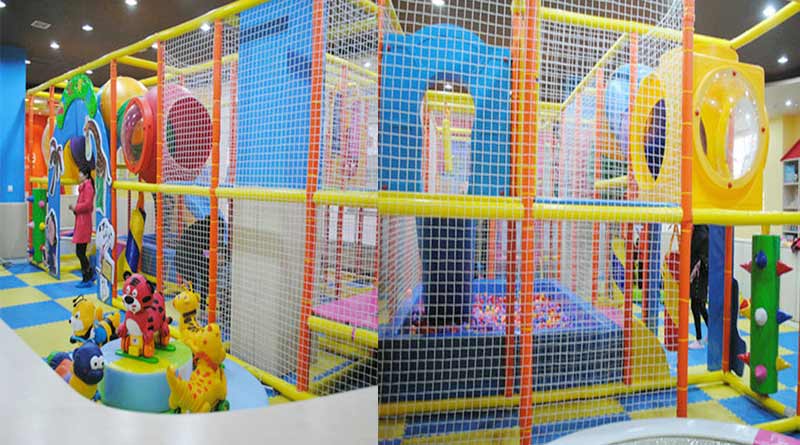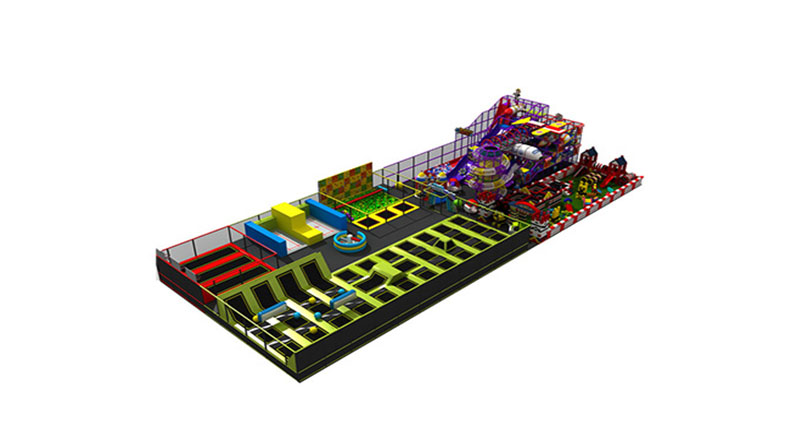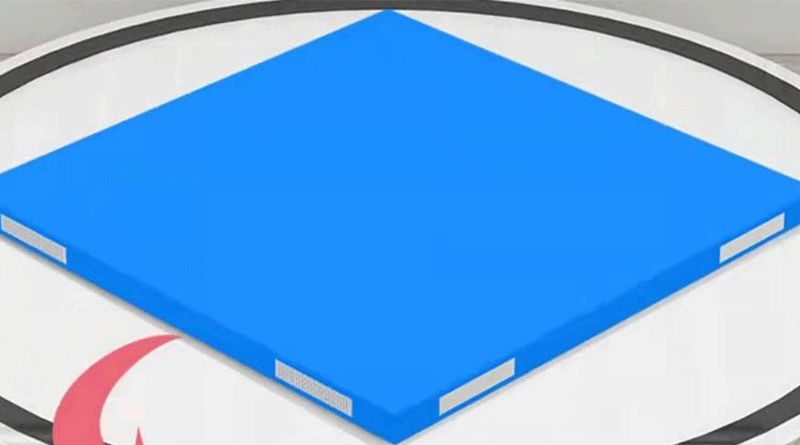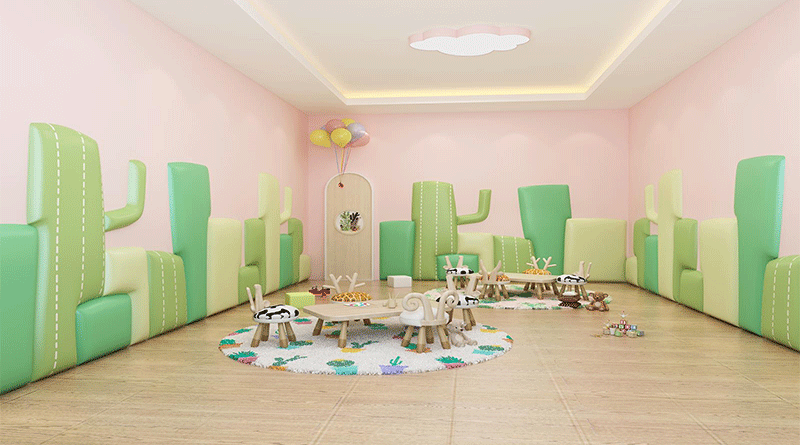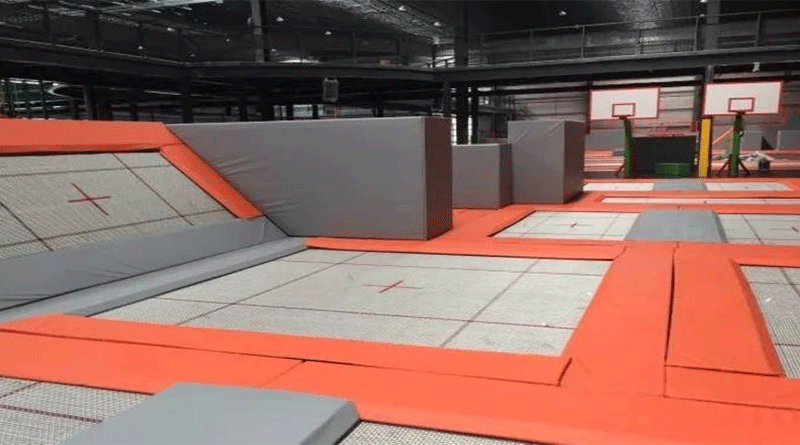How to Design a Mall Playground?
 May 13,2025
May 13,2025At a time when competition in commercial complexes is becoming increasingly fierce, shopping mall playgrounds are no longer simple children's entertainment areas, but an important carrier for attracting customers, extending customer stay time, and improving consumer experience. How to transform limited space into a playground that combines functionality, safety, and commercial value? This article will dismantle the key elements of the entire process for you from space design to supplier selection.
1. Space planning and layout
The space design of shopping mall playgrounds needs to break through the "flat layout" thinking and construct three-dimensional functional zoning.
Vertical layered design: Use high-rise space to set up climbing nets and slide combinations, layout low-age areas on the lower level, and adventure areas on the upper level to double the space efficiency.
Visual penetration: Use translucent fences or glass partitions to ensure that parents can monitor their sight and avoid the feeling of oppression in a closed space.
Passenger flow buffer zone: Set up a rest area and interactive screen at the entrance of the playground to alleviate congestion during peak hours and increase the exposure of surrounding shops.
2. Safety and Compliance
The safety design of the playground needs to establish a "double protection mechanism":
Hardware compliance: Choose facilities that have passed EN1176 (EU), ASTM F1487 (USA) or GB/T 27689 (China) certification to ensure that the material flame retardancy, structural load-bearing, and corner passivation meet the standards.
Dynamic protection: Install AI behavior recognition cameras to monitor children's risks such as falling and crossing the boundary in real time; the ground uses EPDM elastic cushions with a HIC (head injury standard) value of <1000.
It is recommended to reserve 10%-15% of the budget for regular equipment maintenance and safety upgrades.
3. Accurately locate the target audience
The target customer group determines the design:
0-3 years old: The sensory enlightenment area needs to be equipped with soft crawling mats and sound and light interactive walls, and the radius of the parent-accompanying seat shall not exceed 1.5 meters.
4-12 years old: Introduce somatosensory games, AR projection sandbox and other technological equipment, and combine local cultural IP to create theme scenes (such as underwater exploration/space base).
Teenagers and families: Set up parent-child collaborative challenge projects, such as laser mazes and gravity-sensing trampolines, to enhance social attributes.
Data shows that customers in theme parks with clear storylines stay 40% longer and their secondary consumption rate increases by 28%.
4. Theme positioning
The theme is the soul of the amusement park and needs to be deeply in line with the overall tone of the shopping center and the target customer group:
Family and parent-child playground: With warmth and interaction as the core, it is suitable for community-based shopping malls that focus on young families. It can create affinity through soft color matching and cartoon IP implantation.
Technology future space: Use light and shadow interaction, VR technology, etc. to attract young people, suitable for urban complexes that are positioned as fashionable trends.
5. Choose amusement equipment
The equipment should meet the theme, safety standards and development benefits.
a. Naughty Castle Play Equipment
Core customer group: 3-8 years old children and parent-child families.
Scene design: Use soft colors with cartoon shapes, such as mushroom houses, rainbow tunnels, and animal dolls to create an immersive fairy tale world.
Interactive highlights: Incorporate sound and light interactive devices, combine with ocean ball pools, small slides, and climbing nets to meet tactile and auditory multi-sensory stimulation.
Commercial value: Parents can consume in the surrounding rest areas, and the high frequency of visits by young children drives family repetitive customer flow.
b. Trampoline Park
Core customer group: 6-15 years old teenagers and young families
Scene design: industrial style mixed with fluorescent elements, set up professional trampoline park , sponge pool challenge area, Internet celebrity photo wall (such as starry sky trampoline area).
Differentiation highlights: Introducing the "trampoline +" concept, such as trampoline dodgeball, VR trampoline games, taking into account both sports and entertainment, attracting youth group gatherings.
Safety adaptation: high-elastic pads are installed on the edges, age/weight limits are set for each zone, and professional coaches are equipped for real-time monitoring.
c. Ninja Warrior Courses
Core Customers: Children aged 8-18 and families (parent-child play).
Scene Design: Restore popular variety show levels, such as hanging rings, swing bridges, climbing walls, and cableways, with a timing and scoring system to create a competitive atmosphere.
Educational Value: Emphasize "courage cultivation" and "body coordination", set up parent-child collaboration levels (such as double suspension bridges), and promote family interaction.
Space Optimization: Vertically utilize the floor height to create a multi-layer three-dimensional challenge route, and lay high-cushioning EVA mats on the ground to take into account safety and space efficiency.
6. Cost control
30% hardware investment: core equipment procurement and installation
40% scene creation: theme packaging, lighting system, interactive technology
30% flexible reserve: emergency plan, content update, marketing activities
7. Supplier screening
Qualification verification: confirm ISO9001 quality management system certification, special equipment manufacturing license and other documents.
Case investigation: field visits to more than 3 projects of the same scale, focusing on observing equipment wear and passenger flow density.
R&D capabilities: require annual new product development plans to ensure continuous content updates.
Data support: give priority to suppliers equipped with passenger flow analysis systems and able to provide operation optimization solutions.
Service response: clarify terms such as 48-hour on-site maintenance and quarterly safety inspections.
Baiqi specializes in providing customized design, production, installation and after-sales service for indoor play equipment, trampoline equipment, outdoor play equipment and other products.
Conclusion
The essence of excellent shopping mall playground design is the deep combination of spatial economics and children's behavior. Through precise positioning, technological empowerment and supply chain management, we can create high-quality playgrounds and build a commercial closed loop of "play-consumption-repurchase".


